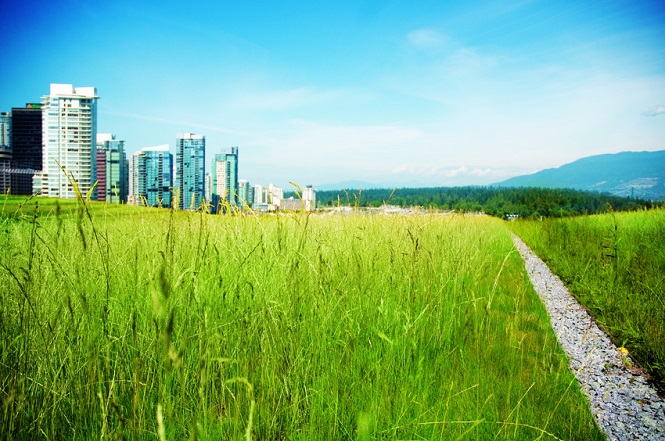 The Vancouver Convention Centre, located in Vancouver, British Columbia, and beautifully situated on Vancouver’s Burrard Inlet with a stunning mountain backdrop, is a real-life how-to when it comes to providing a sustainable venue.
The Vancouver Convention Centre, located in Vancouver, British Columbia, and beautifully situated on Vancouver’s Burrard Inlet with a stunning mountain backdrop, is a real-life how-to when it comes to providing a sustainable venue.
.jpg) Here are just a few of the ways the facility, which also happens to be the world’s first LEED Platinum-certified convention facility, engages in sustainable practices:
Here are just a few of the ways the facility, which also happens to be the world’s first LEED Platinum-certified convention facility, engages in sustainable practices: - The kitchen staff makes everything from scratch using fresh, local and seasonal ingredients. Its “Happy Earth” menus offer certified organic and free-range options.
- The staff avoids using disposable utensils and dishes and donates leftover food to local charities.
- Local wood products from sustainably-managed forests are used throughout the facility.
- The facility recycles nearly half of the total volume of the waste generated each year. The facility-wide recycling program is extensive and includes everything from batteries to organics.
- The facility’s seawater heating and cooling system takes advantage of the adjacent seawater to produce cooling for the building during warmer months and heating in cooler months.
- The staff works closely with each client to ensure sustainability is a priority for each of the more than 500 events the Vancouver Convention Centre hosts each year.
- Surrounding the facility are 400,000 square feet of walkways, bikeways, public open space and plazas.
But the real star of the Vancouver Convention Centre is the hidden meadow, a huge six-acre living roof located on the facility’s west building. Most event attendees may not even realize this unique feature of the facility exists, because it is not designed for public access. Frequent human visitors would likely disturb the ecological habitat created for animals and wildlife. The facility boasts the largest green roof in Canada and the tenth largest green roof in the world.
More benefits of the living roof:
- The roof helps regulate the building’s interior temperature throughout the year. It is designed to act as an insulator, reducing heat losses in the winter and heat gains in the summer.
- The roof does not require any watering, except during the warm and dry summer months.
- The facility has a sophisticated blackwater treatment plant that recycles grey and blackwater that goes back into their washrooms for toilet flushing and is used for rooftop irrigation during drier weather.
- The living roof is designed as a self-sustaining grassy habitat characteristic of the region’s coastal area, and there are more than 400,000 indigenous plants and grasses on it.
- The roof also provides a natural urban habitat for spiders, dragonflies, ants, damselflies, grasshoppers, ants, sparrows, juncos and finches.
- There are four rooftop beehives that provide a home for European honey bees. The bees help pollinate the plants on the living roof and produce approximately 110 pounds of wildflower honey over the course of a year, which is used by the facility’s kitchen.
- No pesticides, herbicides or chemical fertilizers have ever been used on the roof, and most of the clippings from the annual trim are composted back into the soil as a fertilizer.
For more information about this incredible facility, visit the Vancouver Convention Centre site.